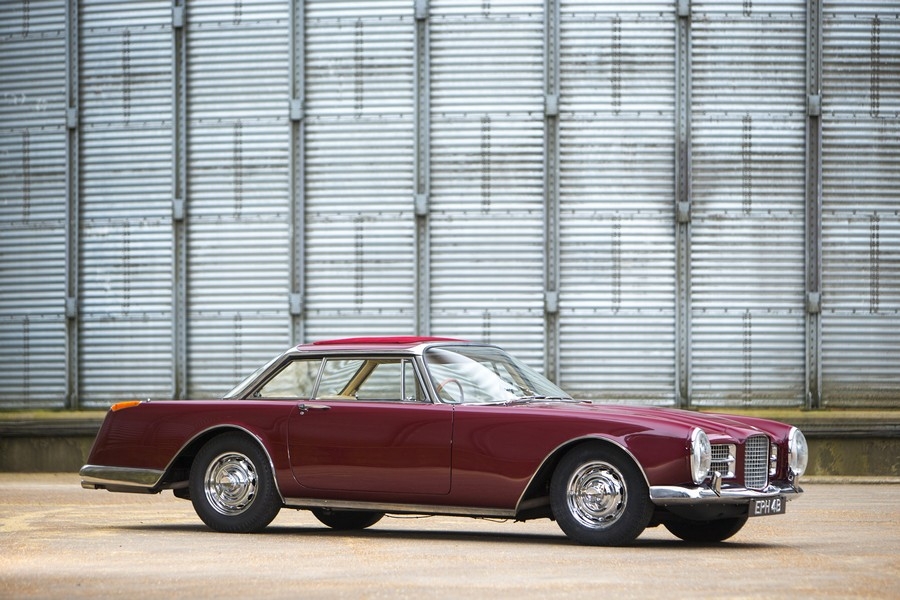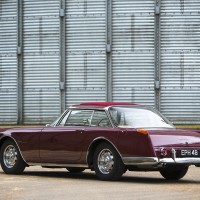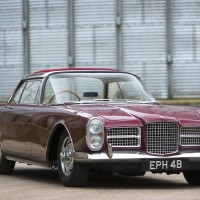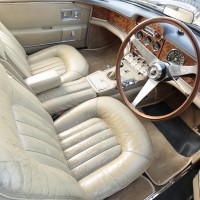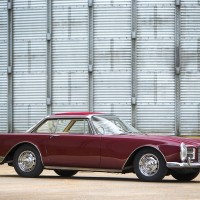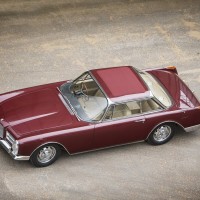SCM Analysis
Detailing
| Vehicle: | 1964 Facel Vega II Coupe |
| Number Produced: | 184 |
| Original List Price: | $15,614 |
| Tune Up Cost: | $450 |
| Distributor Caps: | $35 |
| Chassis Number Location: | Engine compartment on firewall |
| Club Info: | Facel Club USA |
| Website: | http://www.club.facel-vega.com |
| Investment Grade: | B |
This car, Lot 17,sold for £337,500 ($553,041), including buyer’s premium, at Bonhams’ “The December Sale” in London on December 1, 2013.
“To step down into a Facel II and go motoring must be the ambition of many who can never fulfill it” — from the Autocar road test of August 3, 1962, as quoted in Martin Buckley’s master opus Facel Vega, Grand Luxe Sportif, the definitive marque history. Wildly expensive when new at over $15,000, it appealed to the ultra-rich — especially to the newly minted variety, such as rock stars. However, like its predecessors from Facel, it also found favor with movers and shakers in manufacturing and finance — along with the expected celebrity owners.
Development on the Facel II began as early as 1959 and took definitive shape by 1961, when it debuted at the Paris Auto Show that year. It was four inches lower than the HK500, and the entire look was very much in the longer, lower, wider theme in appearance, which took the key Facel design elements and updated them nicely for the 1960s. Larger luggage capacity, four-speaker radio — a transistor unit from 1962 onwards — and separate left- and right-side climate control helped to make the car more usable and entertaining than the HK500.
However, some reviewers complained that the one drawback of the HK500, a somewhat “crashy” ride, had not been sufficiently eradicated.
Receivership and rockers
The drama of the poorly built twin cam used in the junior Facellia model brought Facel to its knees, so the Facel II never had the chance to get the opportunity it deserved to succeed in the marketplace. Two years after the launch of this model, the company was in receivership and was no longer a going concern by the time Beatles drummer Ringo Starr bought our subject car.
While Elvis Presley was known to buy lots of expensive cars, English rockers seemed particularly drawn to interesting GT, sports and luxury cars. They were often photographed with them — in both candid and staged situations — and they appeared a bit more connected to their fancy rides than their Yank counterparts.
When Ringo bought the Facel, he still didn’t have a driver’s license, although he apparently had been driving for a number of years without one. He drove 7,000 miles in the Facel before selling it. His fellow Beatles allegedly encouraged Ringo to sell the car after an accident. They felt the car encouraged a style of fast driving that was too risky for their drummer.
About the Beatle factor
For a Beatles memorabilia collector, the car’s history with Ringo Starr is an interesting point. We appraisers are often required to determine the impact of celebrity ownership on value. Do we factor in the Steve McQueen Effect? And if so, what does it mean?
Two sales of John Lennon vehicles tell dramatic stories. It cannot be argued that Lennon was more of a car guy than Ringo Starr, but his psychedelically painted Rolls-Royce Phantom V limousine sold for $2.3 million at a 1985 Sotheby’s auction, and it remains the most expensive piece of Beatles memorabilia ever sold. That said, the Phantom V is arguably less valuable as a car than as a piece of period rock-and-roll history, so it is not a true comparable here.
What is more to our point here is the $543k realized for Lennon’s Ferrari 330 GT 2+2 at Bonhams’ Goodwood Festival of Speed sale in July 2013. This was the first car Lennon bought after gaining his driver’s license, and he kept the car for three years. The provenance was continuous and documented and the result, more than twice what any other four-headlight Series I 330 GT 2+2 has ever done, clearly demonstrates the value of the Lennon ownership.
So what of the Ringo Starr/Richard Starkey Effect? As I write this, another of the 26 RHD Facel IIs built is for sale by a French dealer. This 1964 model was restored a number of years ago by noted Parisian shop Lecoq and appeared to be in excellent condition. The asking price is $522,308 (€308,000), a fair amount above the most recent other auction sales in the SCM Platinum Database. In October 2011, one sold for $289,508, and another sold in May 2012 at $327,483.
These sales are more or less in line with recent appreciation in the market for European hybrid GT cars. As such, it would appear that the Ringo Starr provenance did not contribute significantly to the price realized for our subject car.
This sale will help move along the prices of Facel IIs in the market, especially those with fresh, correct restorations. They fulfill the basic requisites of the top-tier collectible, as they are rare, attractive, usually owned by interesting people in the past and totally drivable on today’s roads. Given the Beatles connection, I would have to rate this car as well bought and correctly sold. ♦
(Introductory description courtesy of Bonhams.)
